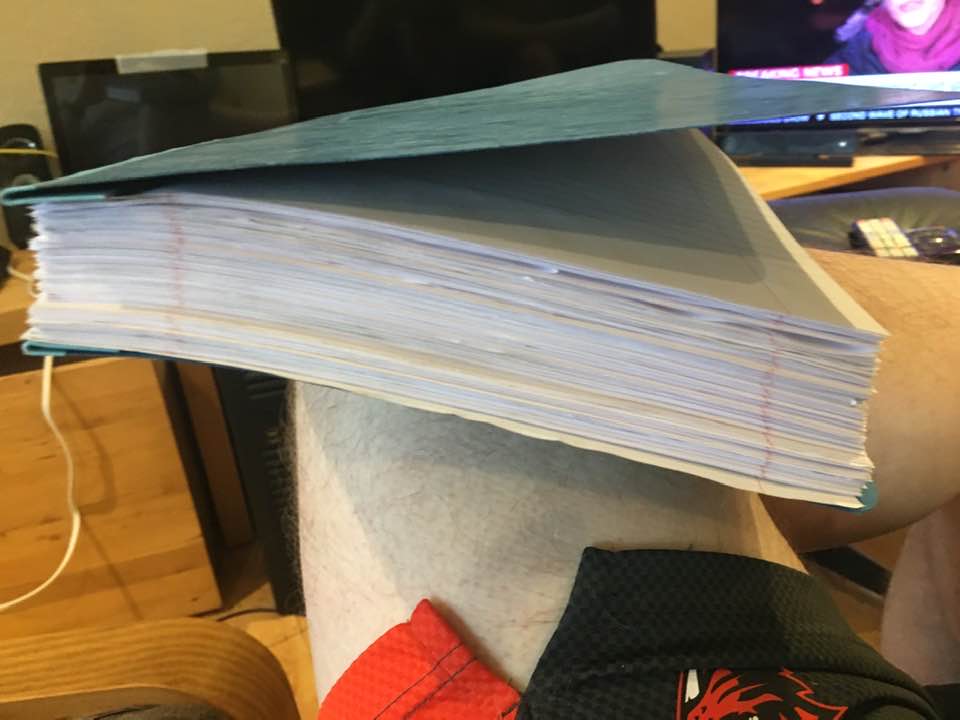I used the dimensionless time[1] to calculate time needed for a cycle to saturate the sorbent. This is a back of the envelope calculation since I am learning Fluidized beds. This is a working document process. I had made an error with my density and I corrected the typo in my excel file.
I am old and retired chemical engineer, but I estimated, using Mg-MOF-74 particles of 4.0e-4 m diameter, maximum absorption capacity of 8.41 mol/kg[1], and a breakthrough dimensionless time near 1200[1] with a cycle time of 998 seconds, with a minimum fluidization velocity 8.1 m/s for 0.75 void fraction of, but I double that to 8.12 to elicit carryover. I estimated the molCO2/kgAir to be 0.0049. Since 2.273e13 molCO2/y needed to be processed, the former and latter lead to 1.49e8 kgAir/sec to be processed. I used the adsorption capacity of 8.41 molCO2/kgSorbent to calculate the total kilograms of sorbent per year to capture 1 Gtonne CO2. I converted that to 85692.88 kg/s and set it equal to density solidsdoubled velocity(3.14(D/4)^2) (1-voidage) to find the inlet area of one fluidized bed adsorber. The area is constant along height.
I then used the velocity of the air carrying the suspended particles to calculate the total mass of particles in one bed height, calculated the volume or particles, subtracted the total volume from the particle volume and found the void volume. The density of the solids is 911 kg/m^3. I checked the voidage by dividing the void volume by the volume of the fluidized bed adsorber and got 0.75 void fraction, which is the value I used to calculate the minimum fluidization velocity.
I calculated the total mass of adsorbent used during all cycles(time of year in seconds/988 s/cycle), which is 4.4e10 kg. I took the ratio of total kgsorbet/yr divided by 4.4e10 and multiplied that value (61.5) times the number of reactors estimated from the mass flow rate per second, which gave me a goal seek of 2.27e13 molCO2/year which was an Ideal 1 reactor. This is 62 fluidized bed adsorption and 124 beds including regenerators. I am assuming the 62 fluidized adsorption beds have the same mass flow rate as the other beds. So, I took the total kg sorbent overall all cycles and multiplied it by 61.5 beds and came up with the 2.780e12 kgsorbent/year value from the top of the spreadsheet[SS].
The land area for 5.44 m diameter and 18 meter tall fluidized bed is (3.71e3 m^2) or 0.00371 km^2. This assumes 30% the Total area for spacing or 3.71e3*(1+0.3). Remember, the recirculation time in each bed is the same as the cycle time, and I am assuming the same mass flow rate of sorbents will be maintained.
Now, if we used all DAC fluidized beds, we need 10 times this value by 2035-40 to do 10 GtonneCO2/year. Groups of these beds would be spread about various locations throughout the world I assume.
The energy requirements is another story both electrically and thermally. Mg-MOF-74 is the leading candidate[3,4], but we need a breakthrough in R&D for better sorbents. University of Michigan is using ML to sort out the best MOF candidates. Also, R&D continues. Should have a better sorbent by 2050 and that will reduce energy requirements[3,4].
One of my books[5], the DOE, NETL, and RTI believe fluidized beds will be a likely option. Granted, the particles will also deteriorate the material of the beds.
I am learning about DAC, fixed beds, and I want to learn fluidized beds. This is my first attempt. Evaluate me. Be critical. I can handle it. I am learning and have made mistakes. I am constantly evaluating my analysis.
References:
[SS] Fluidized Adsorption Bed Number https://1drv.ms/x/s!AiVJ2x5-aoWykNo32gdRgG4R5nE-iA?e=DBomfQ
[1] Mason, J. A., Sumida, K., Herm, Z. R., Krishna, R., & Long, Jeffrey. R. (2011). Evaluating metal–organic frameworks for post-combustion carbon dioxide capture via temperature swing adsorption. Energy Environ. Sci., 4(8), 3030–3040. https://doi.org/10.1039/C1EE01720A
[2] Kunii, D., Levenspiel, O. (1991). Fluidization Engineering. Germany: Elsevier Science.
[3] Singh, J., Goel, N., Verma, R., & Pratap Singh, R. (Eds.). (2023). Advanced Functional Metal-Organic Frameworks: Fundamentals and Applications (1st ed.). CRC Press. https://doi.org/10.1201/9781003252061
[4] Porous Materials for Carbon Dioxide Capture. (2014). Germany: Springer Berlin Heidelberg.
[5] Reiner, D., Bui, M., & Mac Dowell, N. (2019). Carbon Capture and Storage. The Royal Society of Chemistry. https://doi.org/10.1039/9781788012744


